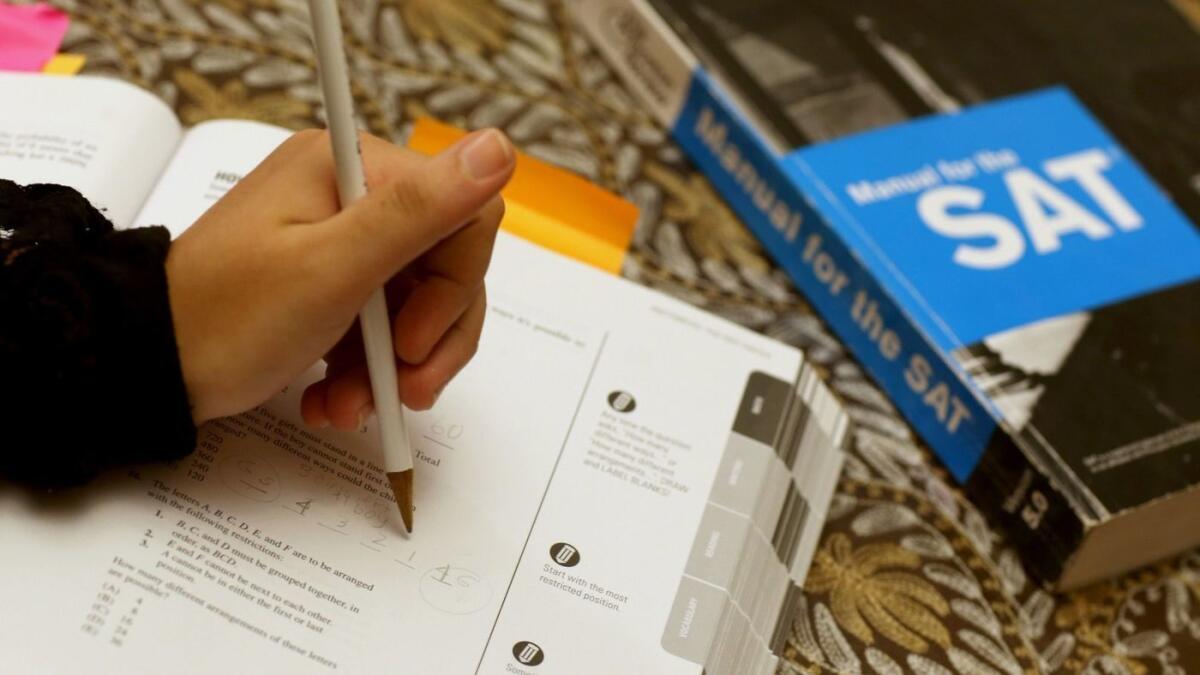Editorial: Don’t let the SAT become the yardstick to measure California high schools

- Share via
There’s no doubt that low-income students are at a disadvantage when it comes to taking college admissions exams such as the SAT and ACT, and it is understandable that some school districts want to help them. But a bill that would allow districts to substitute one of those tests in place of the state’s own academic proficiency exam for high school juniors isn’t the way to solve the problem. Gov. Jerry Brown should veto AB 1951.
School officials who are in favor of the change point out that affluent students often benefit from expensive test-prep tutoring for college entrance exams. If the SAT or ACT were substituted in for the current state exam, teachers could be focusing throughout the school year on the skills needed for those tests, which would help students score higher. It would also allow students to take the test for free. In addition, the substitution would mean one less test in a year that otherwise tends to be exam-packed.
But the state’s regular proficiency exams, administered from grades 3 to 8 and then grade 11, actually serve a purpose. They measure how well students are meeting the state’s own Common Core curriculum standards. A report by an independent organization this year found that despite the claims of the College Board, which produces the SAT, it is not that well aligned to the standards, which emphasize critical thinking skills.
Enter the Fray: First takes on the news of the minute from L.A. Times Opinion »
As important as local school control can be at times, it is the state’s job to set learning standards and an accountability system based on them. California has already done that, and it shouldn’t allow the College Board or any other outside testing organization to, in effect, guide instruction, especially considering how many California students attend community college or California State University, which don’t require entrance exams.
In addition, the state’s tests give the public and parents an opportunity to compare academic achievement at different schools and provide state officials with a way of determining which schools need intervention from Sacramento to improve. Under AB 1951, some schools would require the state test and others would require the SAT or ACT, and there would be no meaningful way to reconcile scores on these different tests so that schools could be compared.
The University of California is considering whether to use the state’s 11th-grade standards exam as a factor in admissions, possibly allowing students to use it as an alternative to the SAT or ACT. It will take several years of study to see whether the state test is a good predictor of college success.
If it isn’t, the state needs to have a serious discussion about why standards geared to college readiness, and a test to measure that readiness, fall short when it comes to gauging a student’s ability to handle university academics.
Follow the Opinion section on Twitter @latimesopinion and Facebook
More to Read
A cure for the common opinion
Get thought-provoking perspectives with our weekly newsletter.
You may occasionally receive promotional content from the Los Angeles Times.









